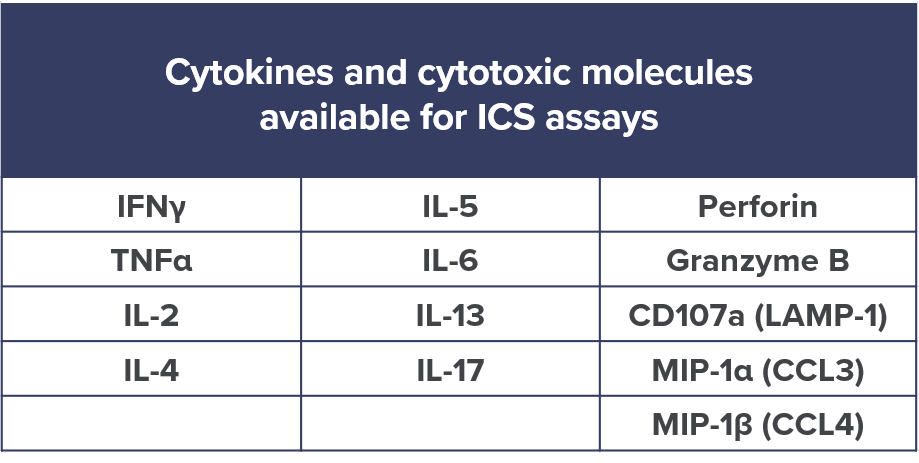Enhance immune response understanding with Intracellular Cytokine Staining using Flow Cytometry
Investigating cytokine production at the single-cell level
Cytokine production reveals comprehensive information on cellular responses, differentiation, and many other signaling events.
Unlike other cytokine investigating techniques, ICS assays by flow cytometry measure the percentage of cytokine-producing cells and provides information about the cellular subpopulation expressing the cytokines of interest.
ICS is one of the assays used to evaluate antigen-specific T-cell immune response in several fields of clinical research including vaccine development, oncology, and autoimmunity.
CellCarta’s approach to measuring cytokine production with ICS provides key functional profiling of immune cell subsets.
Cellular responses as observed by cytokine production
Our immunologists and flow cytometry experts have many years of experience in customizing ICS assays for specific clinical trials, including careful optimization of assay parameters to guarantee reliable results.
The assays can be performed on fresh whole blood or cryopreserved peripheral blood mononuclear cells (PBMC), as well as on tumor-infiltrating lymphocytes (TILs).
Regardless of the stimulation used (proteins, peptides, or antigen-presenting cells), we will provide an accurate profiling of cellular subsets in your samples.

ICS- a complete picture including cytokine production
One advantage of the ICS assay is to allow the simultaneous investigation of intra- and cell-surface markers in individual cells.
In addition, HLA class I multimers can be used to provide comprehensive information on antigen-specific responses.
Leveraging our bioinformatic capabilities as well as complementary assays such as CFSE and ELISpot, we deliver a complete profile of antigen-specific responses.

Intracellular Cytokine Staining: Key Applications
- Identify the frequency of antigen-specific T cells
- Determine the exact phenotype of the responding cell populations
- Analyze the relative distribution of functional subsets
- Characterize drug-induced effects on immune functions ex vivo